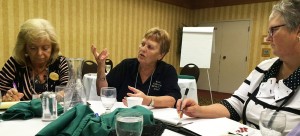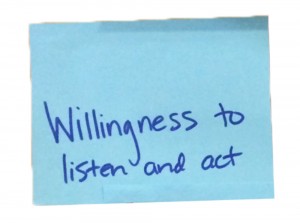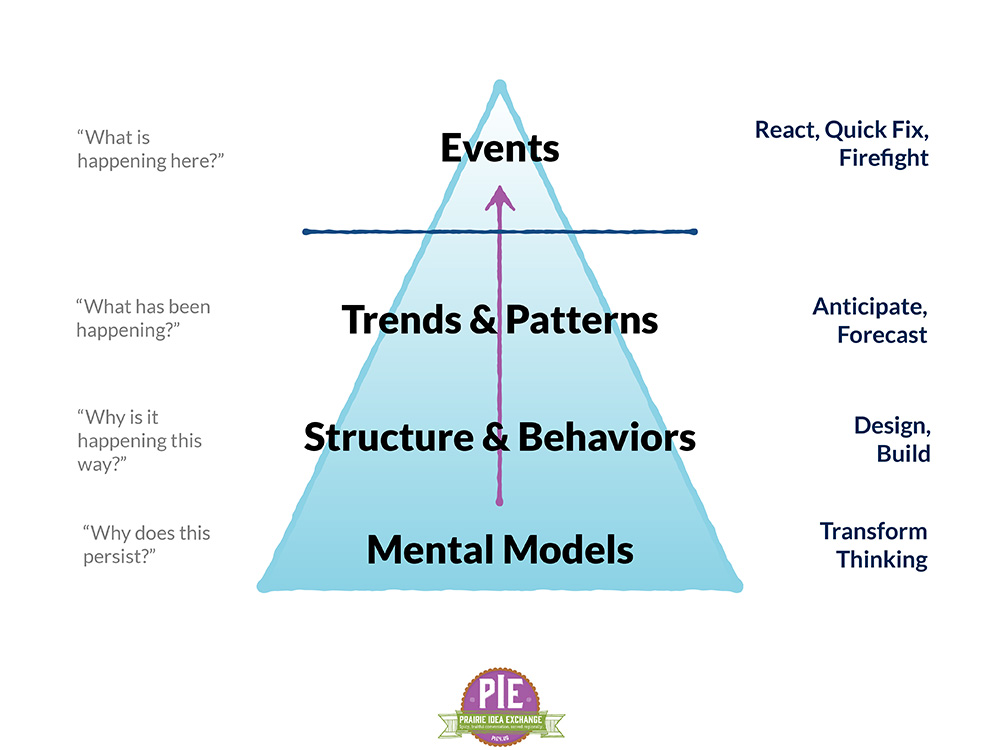 Some in the Eureka community thought one of their problems was that younger adults had no interest in community involvement. Learning they were wrong was a turning point.
Some in the Eureka community thought one of their problems was that younger adults had no interest in community involvement. Learning they were wrong was a turning point.
In January 2014, each of the seven members of the Eureka Community Development Co. board of directors decided to invite five younger adults to the table and ask for their feedback on community happenings.

Wanda Jundt, center, tells her story of getting youths involved as Rita Anderson and Joan Sacrison listen and take notes.
“Nothing was really happening, so we decided to find out what the community wanted,” said Wanda Jundt, executive director.
“When we had that meeting, they said, ‘Thank you for inviting us—we really do want to be involved,’” she recalled. “It was really eye-opening for us, because what we were hearing around town wasn’t what was true—they wanted to be involved. … They wanted to take things into their own hands and do things their own way and not be micromanaged and just do it, and they have done it.”
The group of younger members of the community has become known as the Eureka Ambassadors since that meeting a year ago, organizing such events as holiday fairs, Halloween “spook houses,” a community volleyball league and laser tag events.
The Eureka Community Development Co. was so happy with the result of its invitation to younger residents that it later applied for a Bush Foundation grant, which has allowed the company to make some of the ideas that came forward a reality, including a job fair, customer service training and an upcoming financial advising course.
The organization also now is reaching out to Eureka’s graduates as they attend college, inviting them back to the community by sending them care packages during times when they typically would not receive them. In addition to locally made goodies, the packages include letters from the city, Chamber of Commerce and the economic development group, as well as any professionals in that alumnus’ chosen field of study.
“(We tell them,) ‘We want you to come home, whether it’s when you’re done with college or technical school, or when you have a family, or maybe it won’t be until you retire. This is still your home, and we want you to come back,’” Jundt said. “It’s just to let them know that we’re thinking of them, and that someday we want to have them back.”
The concept began after a speaker at a conference pointed out that small towns “don’t go out of our way to tell our graduates we want them back, but … we for sure want (them) back, and we need (them) here,” said Jundt. “That’s the message we’re trying to send.”
And the group hopes Eureka’s graduates will utilize what they have learned—to “start with yes.”
“Don’t say it can’t be done,” Jundt said. “Not everything is going to be possible, but if you start with ‘yes,’ if it’s a ‘no,’ you explain why and learn from it.”

In any system, there is almost always a lot more going on than we can easily notice, and so much of the “how” and “why” of what is happening stays hidden from view, like an iceberg. When we try to change the system just by seeing what is obviously happening, we miss most of what is causing that to happen, and end up creating a quick fix that backfires or doesn’t solve our problem. NEW GOAL: If we can address what is beneath the surface—what’s actually causing those events—we can make changes in the structures of the system to drive new kinds of action that will create the outcomes we want. THE KEY: It turns out that what happens in a human system is driven by thinking—what we believe and how we view the world. We ultimately create change by changing the way we think and challenging what we assume to be true. —Joe Bartmann
 Dakotafire Get your spark here.
Dakotafire Get your spark here.



